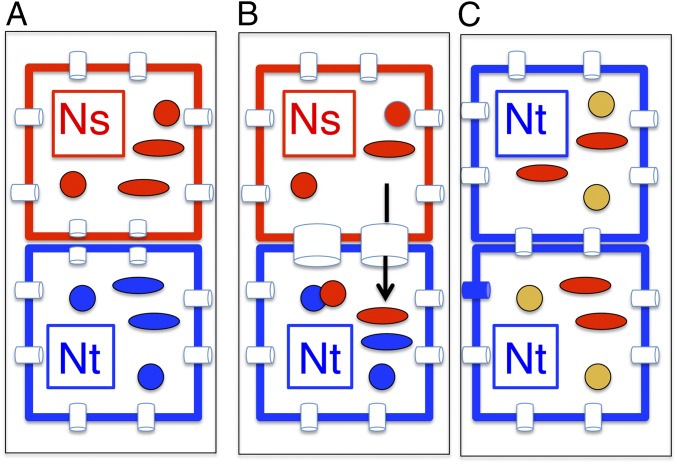Fig. 5.
Transmission and recombination of mitochondria at graft junctions. (A) Grafting disrupts plasmodesmatal connections. The fertile N. sylvestris nucleus (Ns, red square) partner has fertile mitochondria (red circles) and spectinomycin-resistant chloroplasts (red ovals). The CMS N. tabacum nucleus (Nt, blue square) partner carries a nuclear gentamycin resistance gene, CMS mitochondria (blue circles) and wild-type N. undulata plastids (blue ovals). (B) During primary cell wall formation, organelles (organellar DNA) may enter an adjacent cell at the newly formed plasmodesmatal connections (wide tubes). Graft transmission events are selected by resistance to gentamycin (Nt nucleus, blue square) and spectinomycin-resistant Ns plastids (red ovals). Mitochondria fuse (note touching red and blue circles), whereas chloroplasts do not. (C) The graft transmission plant has the selected N. tabacum (Nt) gentamycin-resistant nucleus (blue square) and spectinomycin-resistant N. sylvestris plastids (red ovals). In fused mitochondria (yellow circles) mtDNA recombination yields chimeric fertile or CMS mitochondrial genomes.

